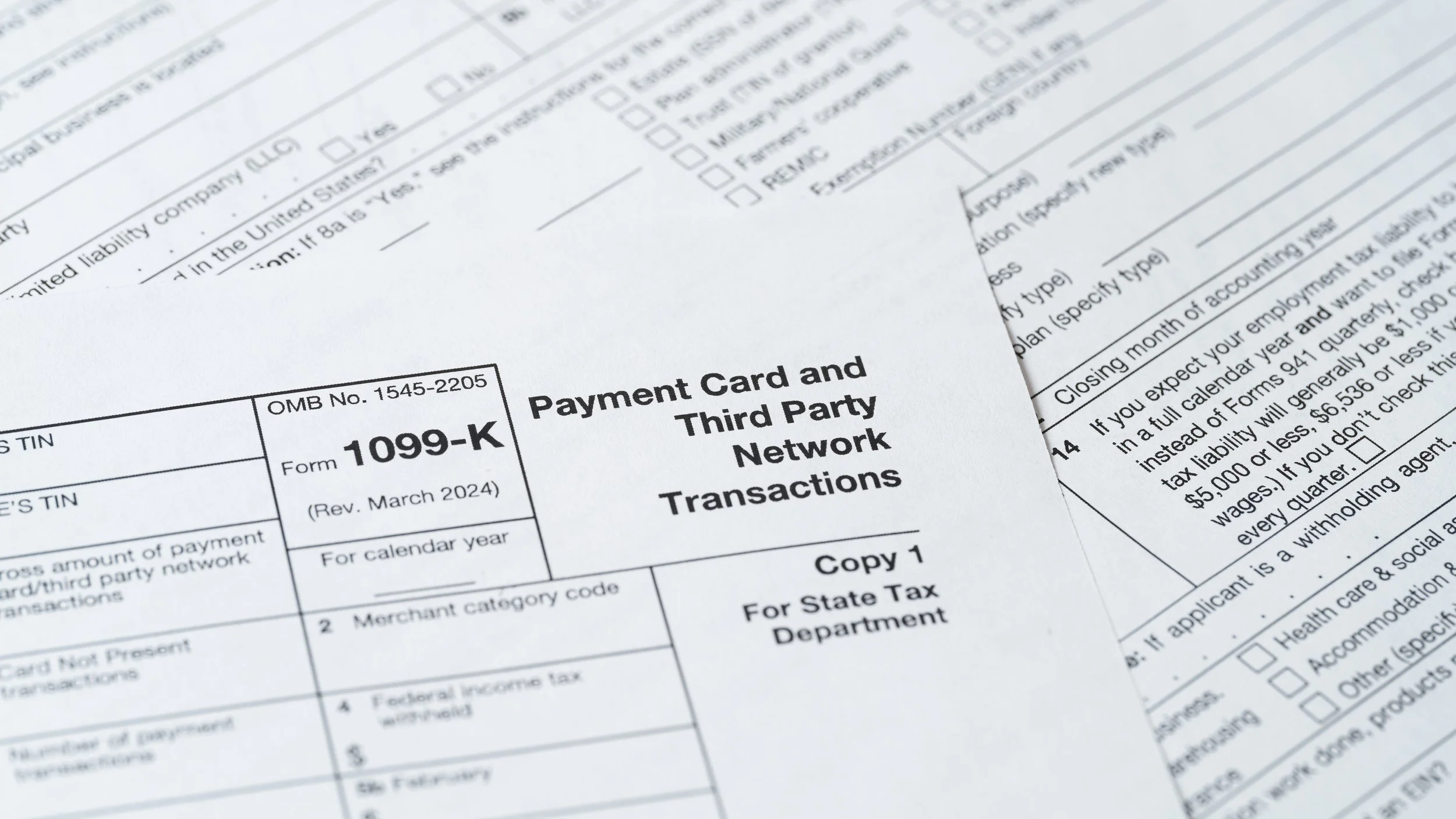The IRS 1099-K Rule Is Changing. Here’s What It Means For You.
The IRS just made it easier to come after your side hustle income. Here’s how to prepare and protect your earnings.
A new IRS rule is rolling out, and it’s going to affect millions of Americans who earn money through side hustles, freelance work, or peer-to-peer payment platforms like PayPal, Venmo, Zelle, Etsy, and eBay.
In the past, you’d only receive a 1099-K tax form from these platforms if you had over 200 transactions and made more than $20,000 in a calendar year. But starting with the 2025 tax season (and phasing in fully by 2027), the threshold is dropping significantly—down to just $600.
That’s right. Just one transaction could trigger a new 1099-K form, and if you’re not ready, you could find yourself facing unexpected taxes, penalties, or worse, a side hustle that quietly becomes a tax liability.
Let’s break down what has changed, why it matters, and what you should do now.
What’s Changing With the 1099-K?
The IRS is phasing in new thresholds for reporting income via third-party payment apps:
· 2025 Filing Season (2024 income): $5,000 threshold
· 2026 Filing Season (2025 income): $2,500 threshold
· 2027 Filing Season (2026 income): $600 threshold (final phase)
If you receive more than the above thresholds via platforms like PayPal or Venmo for business activities, not personal reimbursements, you’ll receive a 1099-K, and the IRS will too.
What Doesn’t Count:
· Selling personal items at a loss (e.g., your used air fryer)
· Reimbursements from friends
· Gifts and birthday money from grandma
What Does Count:
· Freelance or consulting gigs
· Selling crafts or goods on Etsy, eBay, etc.
· Pet sitting, ridesharing, tutoring, and other gig economy work
Why the IRS Is Doing This
In plain terms: they want more money.
Technically, this change is designed to close the “tax gap”—the difference between what taxpayers owe and what they actually report. The IRS estimates it loses hundreds of billions each year, much of it from unreported side hustle income. So, rather than creating a new tax, the IRS is expanding its visibility. More paper trails. Less underreporting.
And if you receive a 1099-K, the IRS assumes that income is taxable unless you prove otherwise.
What Should You Do? Four Smart Steps
Here’s how to avoid being blindsided and take control of your side hustle finances:
Step 1: Know What You Owe
If you earn side income, you're considered self-employed in the eyes of the IRS. That means you’ll owe:
· Income Tax (same as your day job)
· Self-Employment Tax (15.3% for Social Security and Medicare)
Rule of thumb: Set aside 30% of your net income (after expenses) for taxes.
Example: Earn $10,000 and spend $2,000 on valid business expenses → you owe taxes on $8,000 → set aside ~$2,400 for tax season.
Step 2: Minimize What You Owe
Take every legal deduction you qualify for. This includes:
· Business mileage
· Portion of your cell phone or home internet
· Equipment, supplies, or materials
· Software and subscriptions
· Shipping costs
· Marketing or advertising fees
Documentation is critical. Keep records, receipts, and mileage logs. The IRS wants proof, not excuses.
Step 3: Make Quarterly Tax Payments
If you expect to owe more than $1,000 in taxes from your side hustle, you’re required to make estimated quarterly payments.
The process is simple:
1. Calculate your quarterly net profit
2. Multiply by 30%
3. Pay online at IRS.gov/payments
Miss your quarterly deadlines and the IRS may hit you with penalties and interest—even if you pay in full by April.
Step 4: Hire a Professional
Once your side hustle starts bringing in serious income—or even just regular income—it’s time to think strategically. A qualified tax advisor can help you:
· Maximize your deductions
· Avoid IRS penalties
· Determine if an LLC or S Corp makes sense
· Set up retirement and health benefits that reduce taxable income
· Keep you compliant and in control year-round
At Legacy Gen Advisors, we specialize in helping self-employed professionals and side hustlers transition into fully-structured businesses that keep more, protect more, and grow faster.
Final Thoughts
This IRS rule change isn’t a crisis—it’s a wake-up call.
You’ve always been required to report your side hustle income. The only difference now is the IRS will know if you don’t.
Don’t wait until tax time to figure it out. Start tracking now, stay organized, and plan your taxes like a business—not like a hobby.
Need Help Navigating This Change?
Book your free Tax Strategy Call with Legacy Gen Advisors.
We’ll walk you through how this rule affects you, what deductions you can take, and how to create a plan to legally reduce your tax liability.

